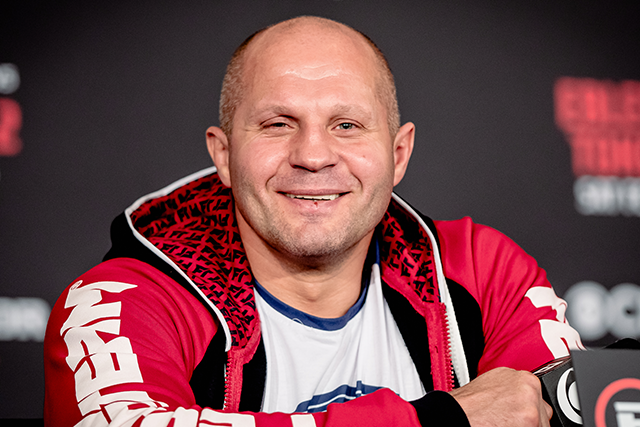The MMA Mindset: Teacher’s Edition
Cameron Conaway Nov 5, 2010

High school hallways throughout America are filled with young men sporting Tapout apparel and Chuck Liddell-inspired Mohawks.
Advertisement
There’s a good chance that when male students say the word “triangle” they’re referring to the choke and not their geometry homework. High schools in Arizona are this way. So are those in Pennsylvania. One can assume it’s the same everywhere in between. Even high school students on remote Native American reservations speak of mixed martial arts. The sport is like some wild root that a farmer used to spend time chopping until he realized he couldn’t stop it, until he realized it might actually be useful to let it go and let it grow.
Prison personnel will tell you that what happens inside the prison
mimics what happens on the outside of the prison. Lady Gaga is a
hit on the outside; she’ll be a hit on the inside. As a certain
illegal drug gains popularity on the outside, its use will increase
on the inside. Despite what some students say, schools do not offer
the constant isolation of imprisonment. If walls and bars can’t
stop something in the masses from spreading, certainly schools
can’t either. Teachers know this, and they use this. They’ve
adapted over the years and have integrated technology into the
classroom, from touch-screen answer pads and remote-controlled
clickers to magic boards that erase themselves and student-led blog
assignments.
Some teachers spend time listening to pop music or watching reality television just so they can relate to their students. Teachers aren’t great simply because they’re masters of their subject matter. They’re great because they can relate. Being a successful teacher means being able to relate to the world of students. William Shakespeare scholars may know everything about the bard, but if they can’t communicate their knowledge in an interesting, relevant and fun way, their knowledge will remain trapped inside of them and will be worthless to their students.
MMA is booming, so teachers are increasingly using MMA as a vehicle to spark the interest that sparks the discussion that sparks the learning. From MMA can come discussions about gender and race identity, the ethics of sport, the value of fitness, alternative lifestyles, pursuing dreams and motives, media and marketing, the list could go on and on:
• When Quinton “Rampage” Jackson said, “black-on-black crime,” what did he mean by this? Where did the idea of black-on-black crime come from?
• When GSP said, “I am a martial artist. He is not. He probably doesn’t understand the meaning of this. After the fight, I guarantee he will,” what did he mean? Aren’t all fighters martial artists?
• Why isn’t women’s MMA as popular as men’s MMA? What would you say to the critics who believe women should not be allowed to fight?
• Is MMA marketed towards a particular audience? Why or why not? What type of commercials air in between the fights?
• Should congenital amputee Kyle Maynard be allowed to fight?
• Why might becoming an MMA champion be a person’s ultimate dream?
• Should the sport be illegal? Why or why not?
• Why are you wearing a Tapout T-shirt? Can the clothes we choose to wear be considered a political act?
Some people are salaried teachers, but everybody -- to an extent -- is a teacher. Those who still ask questions even though they have their own answers are teachers. Those who listen to a new perspective -- those who listen period -- are teachers.
MMA allows us endless opportunities for interesting discussion. Tomorrow at work, open up a can of discussion on your co-workers. See what happens.
Cameron Conaway, NSCA-CPT, CMMACC, was the 2007-2009 Poet-in-Residence at the University of Arizona’s MFA Creative Writing Program. He is the author of “Caged: Memoir of a Cage-Fighting Poet,” (forthcoming Fall 2011 from Tuttle Publishing) which has received endorsements from UFC Hall of Famer Ken Shamrock, BJJ legend Saulo Ribeiro and writers Glen Cordoza and Dinty W. Moore. He’s 2-1 as a mixed martial artist. Visit www.CameronConaway.com for more information.









